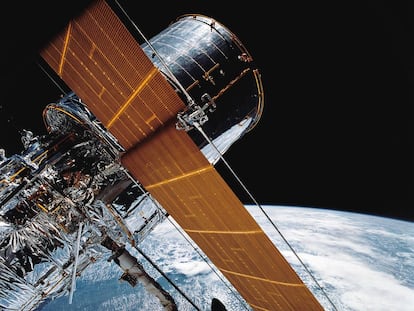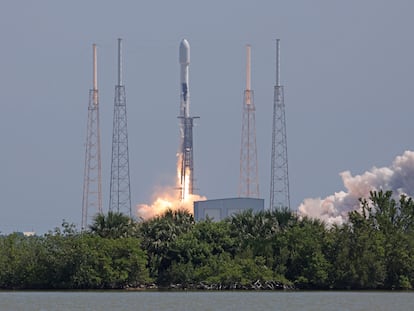The European Space Agency publishes the first images of the Euclid space mission
ESA presents the first results from the telescope that aims to understand the two biggest enigmas of the universe: dark matter and dark energy
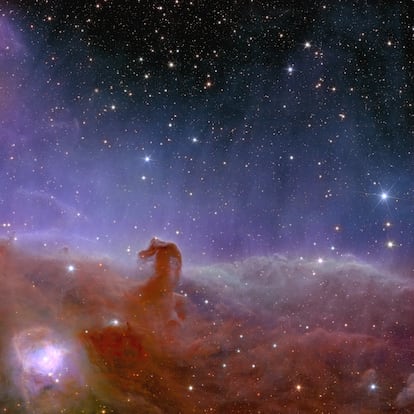
In 1924, astronomer Edwin Hubble announced a discovery that changed our perspective on our place in the universe. The Cepheid stars he had found in the Andromeda nebula, with which it is possible to measure immense cosmic distances, showed that they were not a nearby cloud of gas and dust, but a galaxy, like our own, at an enormous distance. The Milky Way was not the only galaxy that existed but rather one of many.
In the same period, when it was proven that there was a universe far beyond what was known, scientists also began to observe that celestial bodies did not move as expected, measuring the gravitational effect of the visible mass of stars and galaxies. Dark matter is invisible to telescopes but could explain these movements; however, it had to be much more abundant than conventional matter. We now estimate that dark matter accounts for 25% of the universe, while visible matter accounts for only 5%. The rest of the cosmos is dark energy, a hypothetical entity that makes the universe expand faster and faster, pushing the hundreds of billions of galaxies away from each other at full speed.
The Euclid probe, which detects the dark side of the universe, was launched on July 1 in an attempt to discover the nature of this material that makes up 95% of the cosmos; until now, we have only been able to guess about it through its effects. The European Space Agency (ESA), which oversees the mission, has just released the first five color images taken by its instruments. These images are intended to show Euclid’s ability to quickly photograph large complete structures, from galaxies and nebulae to galaxy clusters—up to one third of the visible sky—in high-resolution images.
Over the next six years, it will observe the distances, shapes and motions of hundreds of billions of galaxies to create a three-dimensional map of the universe, reaching objects up to 10 billion light-years away. The study of this map will reveal these objects’ evolution over cosmic time and help us begin to understand the two contradictory phenomena of dark matter: the dark matter that holds large parts of the universe together and the dark matter that threatens to dissolve it.
The Perseus Cluster

The image, which ESA calls an astronomical revolution, shows 1,000 galaxies in this cluster in which there are thousands more enveloped in gas at temperatures of millions of degrees. It is one of the most massive structures in the known universe and it has been shown that, were it not for the gravitational amalgamation of dark matter, it could not be held together. In the background, there are 100,000 more galaxies, some of which are so distant and faint that they have not been seen before. The shape of these galaxies appears slightly distorted in the images, because the effect of gravity from visible objects and dark matter deflects the path of light on its way to the Solar System. Such a survey of billions of galaxies over the last 10 billion years of the cosmos’ history will provide a three-dimensional picture of dark matter’s distribution in the universe.
The Hidden Galaxy
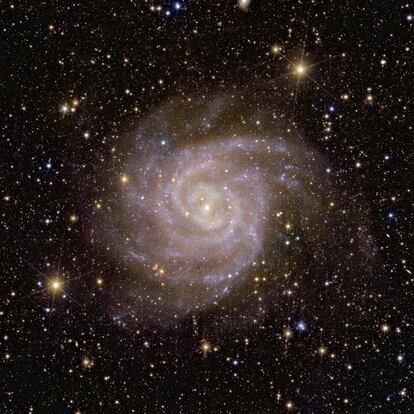
The spiral galaxy IC 342, also known as a hidden galaxy because it is slightly obscured by a region of cosmic dust in our galaxy, is very similar to the Milky Way and is relatively close at about ten million light-years away. Euclid’s infrared camera allows us to obtain more precise information about the stars in this galaxy, despite the dust that obscures it.
Irregular Galaxy NGC 6822
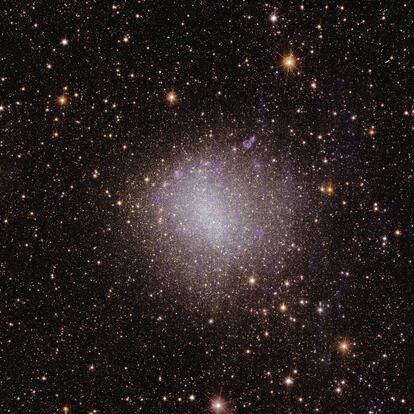
Euclid will observe the brightness of galaxies 10 billion years ago, when the universe was in its infancy. at that time, many galaxies still looked only half-finished, small and irregular; they did not resemble the spirals with which we usually identify them. Some of these galaxies, which would later serve to form larger ones like the Milky Way, abound in that early universe, but they can also be found closer to us. That is the case of NGC 6822, which was photographed by Euclid and is located 1.6 million light-years away from Earth.
Globular cluster NGC 6397
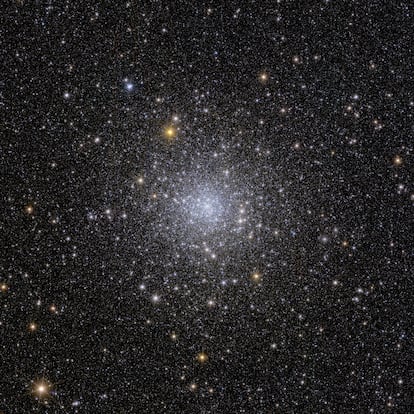
Globular clusters are groups of hundreds of thousands of stars bound together by the gravity of visible and invisible matter, forming a sphere, that are usually found in the outer halo of galaxies. According to ESA, only Euclid can observe a globular cluster at once with enough resolution to distinguish so many stars within the cluster. Such star clusters will be useful for learning about the distribution of dark matter.
The Horsehead Nebula
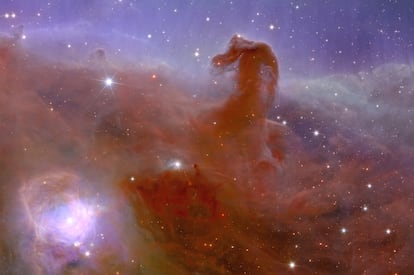
In this hotbed of stars—which is one of the cosmos’ most iconic images—astronomers hope to discover unknown Jupiter-mass planets in their infancy, as well as brown stars that are also in an early phase of their development.
Sign up for our weekly newsletter to get more English-language news coverage from EL PAÍS USA Edition
Tu suscripción se está usando en otro dispositivo
¿Quieres añadir otro usuario a tu suscripción?
Si continúas leyendo en este dispositivo, no se podrá leer en el otro.
FlechaTu suscripción se está usando en otro dispositivo y solo puedes acceder a EL PAÍS desde un dispositivo a la vez.
Si quieres compartir tu cuenta, cambia tu suscripción a la modalidad Premium, así podrás añadir otro usuario. Cada uno accederá con su propia cuenta de email, lo que os permitirá personalizar vuestra experiencia en EL PAÍS.
¿Tienes una suscripción de empresa? Accede aquí para contratar más cuentas.
En el caso de no saber quién está usando tu cuenta, te recomendamos cambiar tu contraseña aquí.
Si decides continuar compartiendo tu cuenta, este mensaje se mostrará en tu dispositivo y en el de la otra persona que está usando tu cuenta de forma indefinida, afectando a tu experiencia de lectura. Puedes consultar aquí los términos y condiciones de la suscripción digital.
More information
Archived In
Últimas noticias
All the effects of gentrification in one corner of Mexico’s Colonia Roma
Palestinian reporter Youmna El Sayed: ‘My family told me I had to choose between being a journalist or a mother’
Russell Tovey: ‘I was advised many times not to come out, I don’t think there was many people who’d done that — and I feel really proud that I’m one of those that did’
Merz tries to replace Macron at the helm of Europe
Most viewed
- The low-cost creative revolution: How technology is making art accessible to everyone
- Christian Louboutin: ‘Young people don’t want to be like their parents. And if their parents wear sneakers, they’re going to look for something else’
- US sanctions against jailed cartel leader ‘El Marro’ highlight Mexico’s lack of control over its prisons
- Families demand repatriation of bodies of Colombians who died in Ukraine: ‘This war is a slaughterhouse for foreigners’
- Liset Menéndez de la Prida, neuroscientist: ‘It’s not normal to constantly seek pleasure; it’s important to be bored, to be calm’

